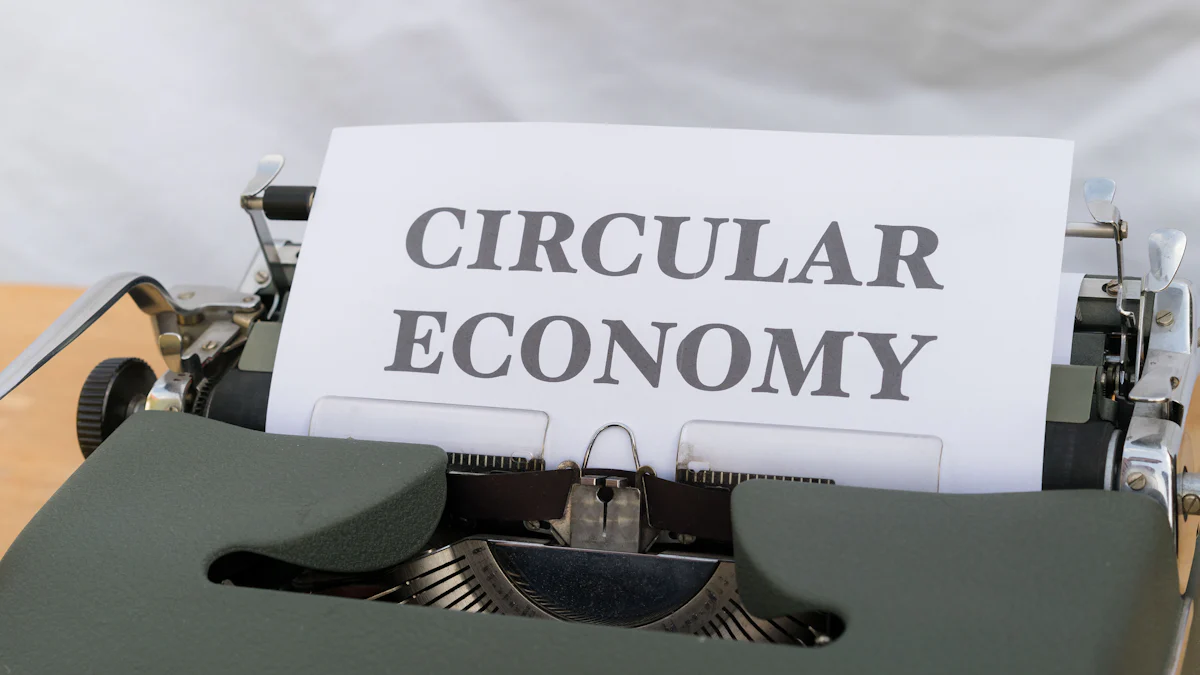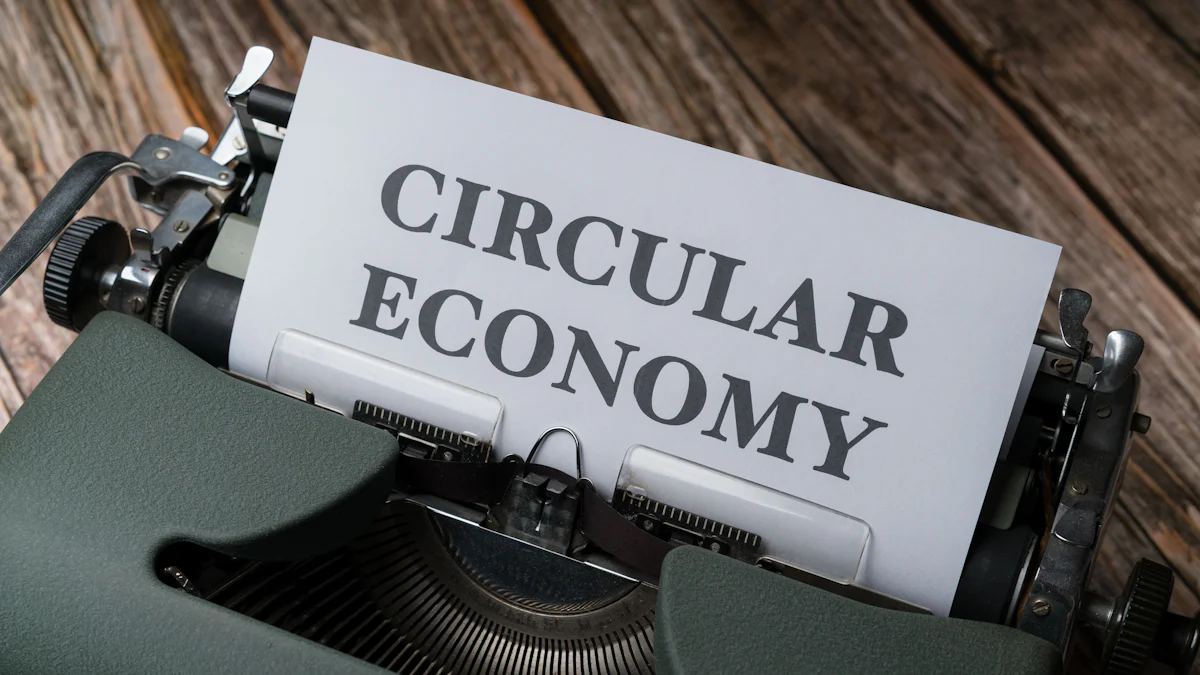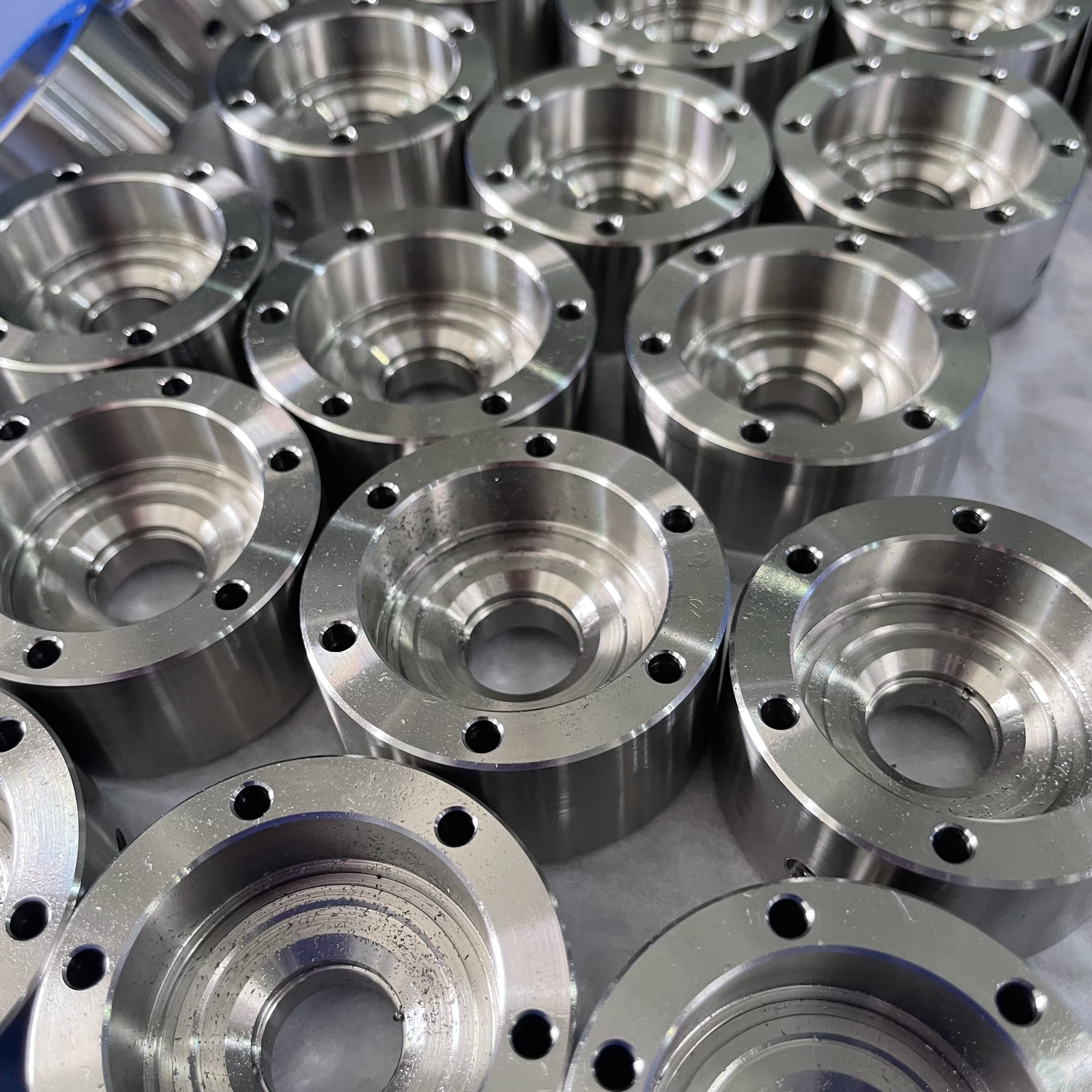How CNC Machining Supports a Circular Economy

Imagine a world where manufacturing creates less waste and uses fewer resources. CNC machining makes this vision a reality. Its precision reduces waste by cutting only what’s needed, leaving minimal scrap. Advanced software ensures every material is used efficiently, and leftover pieces can be recycled into new parts. This approach not only conserves resources but also aligns perfectly with the principles of a circular economy. By adopting CNC machining, you help promote sustainable manufacturing while lowering costs and extending the life of tools and materials.
Key Takeaways
CNC machining reduces waste by cutting only what is needed.
Using CNC machines allows eco-friendly materials like recycled metals and plastics.
Energy-saving CNC machines use less power, cutting costs and pollution.
Leftover materials in CNC machining are recycled, saving new resources.
Adding CNC machining helps save resources and protect the environment.
Understanding CNC Machining and Its Role in Sustainable Manufacturing
What Is CNC Machining?
CNC machining, or Computer Numerical Control machining, is a manufacturing process that uses computerized systems to control tools and machinery. It allows you to create precise parts by following pre-programmed instructions. This technology eliminates the need for manual intervention, ensuring accuracy and consistency in production. Whether you're crafting intricate components or large-scale products, CNC machining delivers exceptional results with minimal waste.
By automating processes, CNC machining reduces errors and optimizes material usage. You can achieve high-quality outputs while conserving resources. This makes it a cornerstone of sustainable manufacturing practices.
Key Features That Support Sustainability
CNC machining stands out for its ability to align with sustainability goals. Its features not only enhance efficiency but also promote eco-friendly practices. Here’s how:
It uses eco-friendly materials like recycled metals and biodegradable plastics. These materials reduce environmental harm and support a circular approach to manufacturing.
Recycling and waste reduction strategies are integral to CNC machining. Closed-loop systems collect and reuse scrap materials, ensuring nothing goes to waste.
Energy-efficient machines play a vital role. Advanced control systems and precision sensors optimize energy usage, lowering the carbon footprint of your operations.
Renewable energy sources, such as solar or wind power, can integrate seamlessly with CNC machining systems. This further reduces reliance on non-renewable energy.
Feature | Description |
|---|---|
Energy Efficiency | Energy-efficient CNC machines minimize environmental impact. |
Use of Eco-Friendly Materials | Sustainable materials enhance overall sustainability. |
Waste Reduction Strategies | Closed-loop systems recycle and reuse materials, promoting a circular economy. |
These features make CNC machining a powerful tool for sustainable manufacturing.
Why CNC Machining Is Essential for a Circular Economy
CNC machining plays a pivotal role in achieving a circular economy. Its precision minimizes errors and waste, ensuring optimal material usage. By determining the best cutting patterns, you can reduce unusable materials and excess waste. This efficiency aligns perfectly with circular principles.
The process also supports the use of eco-friendly materials, such as recycled metals and biodegradable plastics. Recycling and waste reduction strategies, including closed-loop systems, further enhance its contribution to a circular economy. These systems collect and reintroduce scrap materials into the production cycle, reducing the need for new resources.
By adopting CNC machining, you embrace a sustainable manufacturing approach that conserves resources, reduces waste, and promotes a circular mindset. It’s a step toward a future where manufacturing and sustainability go hand in hand.
Challenges of Traditional Manufacturing in a Circular Economy
Material Waste and Inefficiency
Traditional manufacturing often struggles with waste and inefficiency. You may find that excess inventory ties up valuable resources like capital and storage space. Overproduction creates surplus products that often go unused, leading to unnecessary waste. Flawed items requiring rework consume additional materials and energy. These inefficiencies not only increase costs but also hinder your ability to adopt sustainable practices.
Other forms of waste include motion waste, where inefficient movement of materials slows production, and waiting time caused by delays in the workflow. Transportation waste, from unnecessary handling or movement of goods, adds to energy consumption and emissions. Processing waste, where resources like energy or water are overused, further highlights the inefficiency of traditional methods. Addressing these challenges is crucial for reducing waste and aligning with circular economy principles.
Environmental Impact of Conventional Methods
Conventional manufacturing methods often leave a significant environmental impact. Excessive energy consumption and reliance on fossil fuels contribute to greenhouse gas emissions. You may notice that traditional processes generate large amounts of waste, much of which ends up in landfills. This waste pollutes the environment and depletes natural resources.
Water usage in traditional manufacturing is another concern. Many processes require vast amounts of water, which can strain local ecosystems. Additionally, hazardous chemicals used in production can contaminate soil and water sources. These practices harm the environment and make it harder to transition to sustainable manufacturing. By recognizing these impacts, you can take steps to adopt cleaner, more efficient methods.
Limited Reuse and Recycling of Materials
Traditional manufacturing often overlooks the potential of reusing and recycling materials. You might find that many processes are designed for single-use materials, which limits their lifecycle. This approach increases demand for raw resources and generates more waste.
Recycling systems in conventional methods are often inefficient or nonexistent. Without proper systems, valuable materials like metals and plastics are discarded instead of being repurposed. This not only wastes resources but also increases the environmental impact of production. By focusing on reuse and recycling, you can extend the life of materials and reduce the strain on natural resources.
How CNC Machining Promotes a Circular Economy

Material Efficiency and Waste Reduction
Precision Cutting to Minimize Scrap
CNC machining excels in material efficiency by using precision cutting techniques. You can achieve exact dimensions with minimal waste, unlike traditional methods that often produce excessive scrap. CNC machines remove only the necessary material, ensuring that every inch of raw material serves a purpose. This approach not only reduces waste but also lowers production costs. By maximizing material use, you contribute to a circular economy where resources are conserved and waste is minimized.
Reuse and Recycling of Leftover Materials
CNC machining supports recycling materials by incorporating leftover scraps into new production cycles. Closed-loop systems collect and repurpose these remnants, reducing the need for virgin resources. For example, metals and plastics can be melted down and reused, aligning with eco-friendly practices. This strategy enhances waste management and promotes sustainability by keeping materials in circulation longer. You can adopt these waste reduction strategies to lower costs and environmental impact.
Energy Conservation in CNC Machining
Optimized Machine Operations for Lower Energy Use
Energy-efficient CNC machines consume only the energy required for each task. Automation and advanced control systems optimize operations, reducing energy consumption and emissions. By investing in these technologies, you can minimize your environmental footprint while maintaining high production quality. This energy-saving approach not only supports sustainability but also cuts operational costs.
Integration with Renewable Energy Sources
CNC machining facilities can integrate renewable energy sources like solar panels or wind turbines. This reduces reliance on non-renewable energy and lowers carbon footprints. For instance, powering CNC machines with renewable energy enhances sustainability and aligns with circular principles. Companies adopting this practice demonstrate leadership in eco-friendly practices, inspiring others to follow suit.
Sustainable Practices in CNC Machining
Use of Recyclable and Eco-Friendly Materials
Using recyclable materials like metals and biodegradable plastics in CNC machining supports sustainable practices. These materials reduce the need for virgin resources and minimize the carbon footprint of production. By choosing eco-friendly materials, you contribute to recycling efforts and promote a circular manufacturing process.
Extending Product Lifecycles Through Repairs and Upgrades
CNC machining enables remanufacturing by producing precise components for repairs and upgrades. Instead of discarding old products, you can extend their lifecycles through refurbishment. This reduces waste and conserves resources, aligning with circular economy principles. By adopting these practices, you help create a sustainable future.
Benefits of CNC Machining for Sustainable Manufacturing
Cost Savings Through Resource Optimization
CNC machining helps you save costs by optimizing resources at every step of the manufacturing process. By selecting the right tools for specific jobs, you can reduce unnecessary expenses. Optimizing tool paths minimizes machining time, which lowers energy consumption and operational costs. Multipurpose tools further simplify processes, cutting down on the need for additional equipment.
Simplifying part designs also reduces the number of machining steps required. This leads to more efficient production cycles and eliminates the need for custom tooling. Standardized components streamline operations, saving both time and money. Additionally, CNC machining automates many tasks, reducing labor costs and minimizing human error. By improving cutting paths, you can maximize material utilization and reduce waste, ensuring every resource is used effectively.
Reduced Environmental Footprint
CNC machining significantly lowers the environmental impact of manufacturing. It maximizes raw material use, ensuring minimal waste. Automation and advanced control systems reduce energy consumption, helping you cut emissions. Energy-efficient machines further optimize energy usage, and many facilities now integrate renewable energy sources like solar or wind power.
The use of eco-friendly materials, such as recycled metals and biodegradable plastics, supports sustainable practices. Closed-loop systems collect and reuse scrap materials, keeping them in circulation and reducing the need for virgin resources. These features make CNC machining a powerful tool for promoting a circular economy while protecting the environment.
Alignment with Circular Economy Principles
CNC machining aligns seamlessly with the principles of a circular economy. Its precision ensures efficient use of materials, reducing waste and conserving resources. By reusing leftover materials and incorporating recyclable components, you can keep resources in use for longer. This approach minimizes the demand for new raw materials and supports a sustainable manufacturing cycle.
Energy-efficient operations and the integration of renewable energy sources further enhance its circular benefits. CNC machining also extends product lifecycles by enabling repairs and upgrades, reducing the need for replacements. By adopting these practices, you contribute to a future where manufacturing thrives without depleting the planet’s resources.
Enhanced Product Quality and Longevity
CNC machining takes product quality and durability to the next level. Its precision ensures that every part meets exact specifications, reducing errors and inconsistencies. This level of accuracy not only enhances the performance of your products but also minimizes the need for rework or replacements. By investing in CNC machining, you create products that last longer and perform better, aligning with the principles of a circular economy.
Tip: High-quality products mean fewer replacements, which saves resources and reduces waste. This is a win for both your business and the environment.
CNC technology also maximizes the use of raw materials. By removing only the necessary amount, it reduces waste and ensures efficient resource utilization. This approach supports sustainable manufacturing while maintaining superior product standards. Additionally, CNC machines extend the lifespan of tools by minimizing wear and tear. You’ll find that this reduces the frequency of replacements, saving costs and conserving resources.
Here’s how CNC machining enhances product quality and longevity:
Precise material removal ensures consistent and high-quality outputs.
Efficient processes lower resource consumption compared to traditional methods.
Eco-friendly practices, such as using recycled materials, reduce environmental impact.
Optimized energy usage preserves natural resources and supports sustainability.
The durability of CNC-machined products also contributes to a circular economy. You can repair or upgrade components instead of discarding them, extending their lifecycle. This reduces waste and promotes a sustainable approach to manufacturing. By adopting CNC machining, you not only improve product quality but also contribute to a greener future.
Inspiration: Every step you take toward sustainability makes a difference. With CNC machining, you’re not just creating better products—you’re building a better world.
Future Trends in CNC Machining and Circular Practices

Advancements in Smart and Sustainable Manufacturing
CNC machining is evolving rapidly to meet the demands of sustainable manufacturing. You can now rely on machines designed for energy efficiency, which reduce emissions and lower production costs. Advanced automation and control systems optimize energy use, ensuring minimal waste. These technologies allow you to maximize raw material utilization and extend the lifespan of tools, making your operations more cost-effective and eco-friendly.
Sustainable practices are also becoming the norm. Many manufacturers now use recycled metals and biodegradable plastics in their processes. Recycling strategies, such as closed-loop systems, keep materials in circulation longer. By adopting these advancements, you can align your manufacturing processes with circular practices and contribute to a greener future.
Integration of AI and IoT for Greater Efficiency
Artificial Intelligence (AI) and the Internet of Things (IoT) are transforming CNC machining. AI-driven systems improve precision and material utilization, helping you reduce waste and energy consumption. These technologies optimize machining paths and energy control, making your operations more efficient and sustainable.
IoT takes efficiency to the next level by enabling real-time monitoring. Sensors collect data on spindle speed, feed rate, and tool wear, allowing you to address issues before they escalate. Predictive analytics powered by AI can analyze tool wear patterns, helping you prevent costly errors. With these tools, you can maintain high-quality production while minimizing environmental impact.
Development of Eco-Friendly and Recyclable Materials
The materials used in CNC machining are also undergoing a transformation. You can now choose from a growing range of eco-friendly options, such as biodegradable plastics and recycled metals. These materials reduce the need for virgin resources and lower the carbon footprint of your operations.
For example, recycled aluminum is gaining popularity in industries like aerospace and automotive. Manufacturers are shifting away from traditional materials like ABS and PVC, which are derived from fossil fuels, toward options with a smaller ecological footprint. By incorporating these materials into your processes, you can enhance sustainability and support a circular economy.
Inspiration: Every step you take toward adopting these trends brings you closer to a future where manufacturing and sustainability go hand in hand.
Innovations in Recycling and Material Recovery
Recycling and material recovery in CNC machining have reached new heights. These innovations allow you to reduce waste, conserve resources, and embrace sustainable manufacturing practices. By adopting these methods, you can transform leftover materials into valuable assets.
Modern CNC machining uses eco-friendly materials like recycled metals and biodegradable plastics. These materials not only reduce environmental harm but also align with circular economy principles. You can also apply eco-friendly coatings to parts, enhancing their durability while minimizing ecological impact. This approach ensures that every component contributes to sustainability.
Closed-loop systems are another game-changer. These systems collect waste materials like cuttings and shavings, which can be reused in other manufacturing processes. For example, leftover metal scraps can be melted down and reprocessed into new parts. This keeps materials in circulation longer and reduces the need for virgin resources. You can even use reprocessed materials for rapid prototyping, cutting down on waste while speeding up production.
Advanced software plays a crucial role in optimizing material usage. It helps you minimize waste by determining the most efficient cutting paths. This precision ensures that every inch of raw material serves a purpose. Energy-efficient motors further enhance sustainability by reducing power consumption during operations.
By embracing these innovations, you contribute to a greener future. Waste becomes an opportunity rather than a burden. Every step you take toward recycling and material recovery strengthens your commitment to a circular economy. Together, these practices create a manufacturing process that respects the planet and inspires others to follow your lead. 🌍
Tip: Start small by integrating recycled materials into your processes. Every effort counts toward building a sustainable future.
CNC machining empowers you to embrace a circular economy by reducing waste, conserving resources, and adopting sustainable practices. Its precision ensures minimal material waste, while energy-efficient technologies lower emissions and operational costs. By using eco-friendly materials and recycling strategies, you contribute to a sustainable future where resources are preserved, and environmental harm is minimized.
The long-term benefits are undeniable. You conserve natural resources, reduce landfill waste, and align your operations with principles of resource efficiency. Manufacturers like you can lead the way by integrating closed-loop systems, optimizing energy use, and reusing materials. Every step you take toward CNC machining strengthens your commitment to sustainability and inspires others to follow.
Inspiration: Your actions today shape a greener tomorrow. Start your journey toward sustainable manufacturing with CNC machining and make a lasting impact on the planet.
FAQ
What makes CNC machining eco-friendly?
CNC machining minimizes waste by using precision cutting and recycling leftover materials. It also supports energy-efficient operations and integrates renewable energy sources. By adopting CNC machining, you reduce your environmental footprint while conserving resources. This approach aligns perfectly with the principles of a circular economy.
Can CNC machining work with recycled materials?
Yes! CNC machining works seamlessly with recycled metals and biodegradable plastics. These materials reduce the need for virgin resources and lower production costs. By using recycled materials, you contribute to sustainability and keep valuable resources in circulation longer, supporting a greener manufacturing process.
How does CNC machining reduce energy consumption?
CNC machines optimize energy use through automation and advanced control systems. These systems ensure that machines consume only the energy needed for each task. You can also integrate renewable energy sources like solar or wind power to further reduce your carbon footprint and operational costs.
Is CNC machining suitable for small businesses?
Absolutely! CNC machining offers cost-effective solutions for businesses of all sizes. Its precision reduces material waste, saving you money. Automation lowers labor costs, and energy-efficient machines cut operational expenses. By adopting CNC machining, you can achieve sustainable manufacturing without compromising your budget.
How does CNC machining extend product lifecycles?
CNC machining enables you to repair and upgrade products instead of discarding them. It produces precise components for refurbishments, extending the lifespan of tools and machinery. This reduces waste and conserves resources, helping you align with circular economy principles while saving costs.
Tip: Start small by repairing existing products with CNC-machined parts. Every step counts toward sustainability! 🌱
See Also
Streamlined CNC Machining Solutions for Accurate Production Needs
Uncovering Seven Advantages of CNC Machining in Modern Manufacturing
The Impact of CNC Technology on Precision Manufacturing Excellence
Understanding CNC Technology's Role in Modern Manufacturing Advancements
Investigating CNC Machining Options for High-Precision Production
About US
Follow Us
Your prototype holds unparalleled significance, and we deeply value its uniqueness. Collaborating with you during the preparation phase for running your prototype or parts is a commitment we gladly embrace. Whether it's a single part or a complex assembly, we are dedicated to selecting the optimal tools and pathways to bring your envisioned product to life.
At Precision Fab CNC Machining, we specialize in producing parts for prototypes, short runs, and high-volume production. Our prototyping machine capabilities extend across metal, plastic, and wood machining, with welding fabrication services available to complement and finalize your prototype if required.
Address
Address: Room320 10F, Building A,Nanshan international building, Dayawan District, Huizhou, Guangdong, 516001 China
Contacts
billy@timaycnc.com

